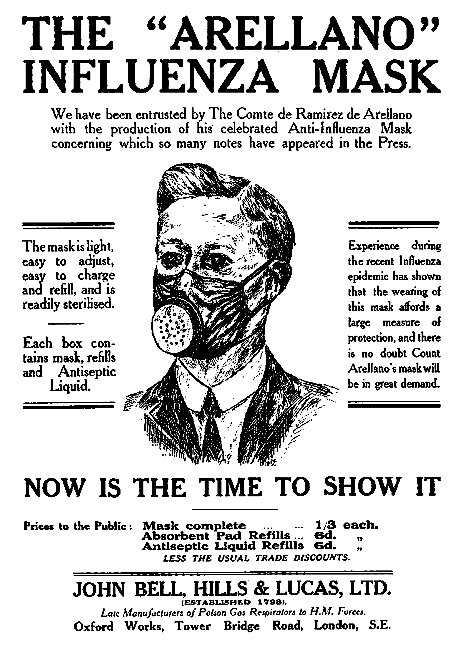|
If the First World War wasn’t bad
enough in terms of lives lost, it was immediately
followed by a terrible catastrophe that also led to a
large number of deaths. The so called ‘Spanish Flu’
pandemic of 1918 was one of the greatest medical
disasters of the 20th century, which affected most of
the world. Today we remember the recent Covid epidemic,
which in many ways was similar to the 1918 outbreak.
During the First World War,
newspapers were censored. The first cases to feature
in the headlines were the ones in Spain, which was
neutral during the war. One of the casualties was King
Alfonso of Spain and so it became known as the ‘Spanish
Flu’. It is thought that in the UK, the virus was spread
by soldiers returning home from the trenches in northern
France. Treatment was also limited. There was no National Health Service, no
antibiotics, no vaccinations and hospitals were
overwhelmed with doctors and nurses working to breaking
point. To make matters worse, a vast number of medical
staff had been diverted to work in the war effort.
|
 |
It spread in troop ships. The
port of Glasgow was the first place to record the flu in
Britain, in May 1918. It was transmitted from person to
person through their breath.
Soldiers travelled across
the country by train and so the flu spread from the
railway stations to the centre of towns and cities and
to the countryside.
It had reached London and the south
by August. The pandemic was not mentioned in parliament
until October 1918, but there was no strategy for
tackling it.
Within hours of feeling the first symptoms of
fatigue, fever and headache, some people rapidly
developed pneumonia and started turning blue, due to a
shortage of oxygen, often struggling for breath before
for suffocating to death. |
| The only advice offered by local authorities and in
the newspapers to prevent the spread, was to catch later
trains to avoid crowds, wearing extra layers, thoroughly
washing drinking glasses, giving up shaking hands and
giving up kissing. People were advised to wear masks,
many schools were closed, cinemas were required to be
ventilated at regular intervals and public gatherings
were avoided. Some factories even relaxed no-smoking
rules in the belief that cigarettes would help prevent
infection. |
|
Mortality was highest in people
younger than five, those between twenty to forty five
and people aged in their late sixties or older.
Sixty
percent of deaths occurred in people aged twenty to
forty five.
Undertakers were overwhelmed. A quarter
of the British population were affected and around
228,000 people in the country died.
1918 was the first
year on record in which deaths exceeded births.
Throughout the world, the pandemic
lasted for nearly three years, from March 1918 to
December 1920 causing an estimated 25 million deaths.
A
quarter of the British population caught the disease
before it rapidly disappeared.
It is estimated that
about 500 million people or one third of the world’s
population was infected, making it one of most
devastating pandemics in human history.
|

An advert from January 1919. |
 |
Return to the
previous page |
|